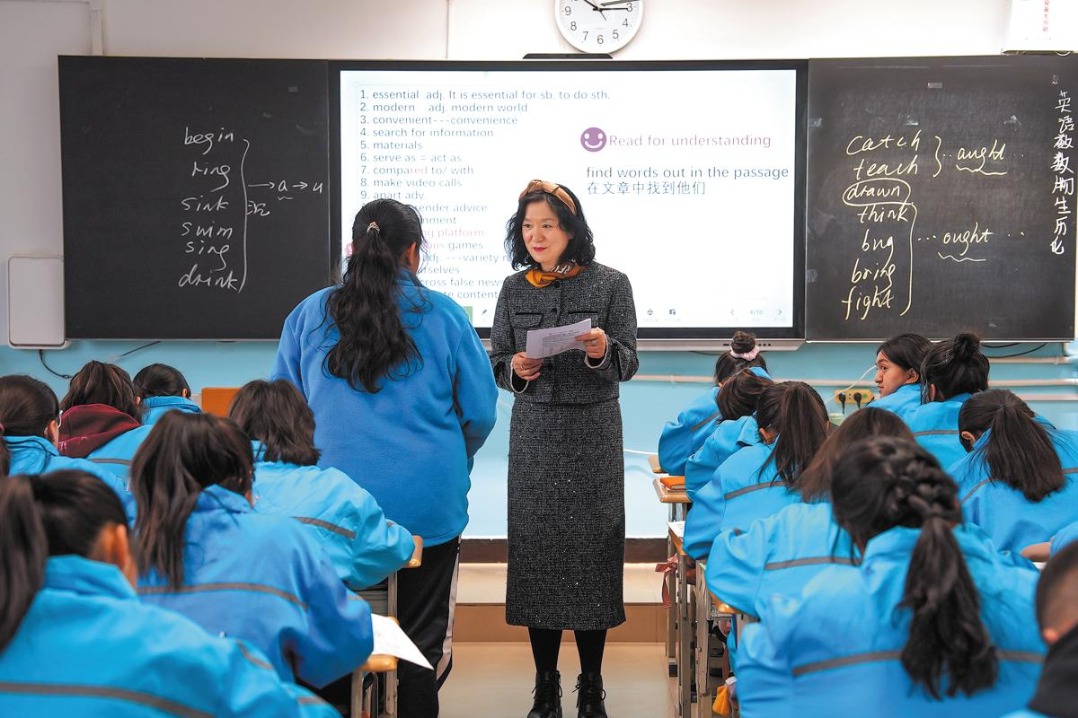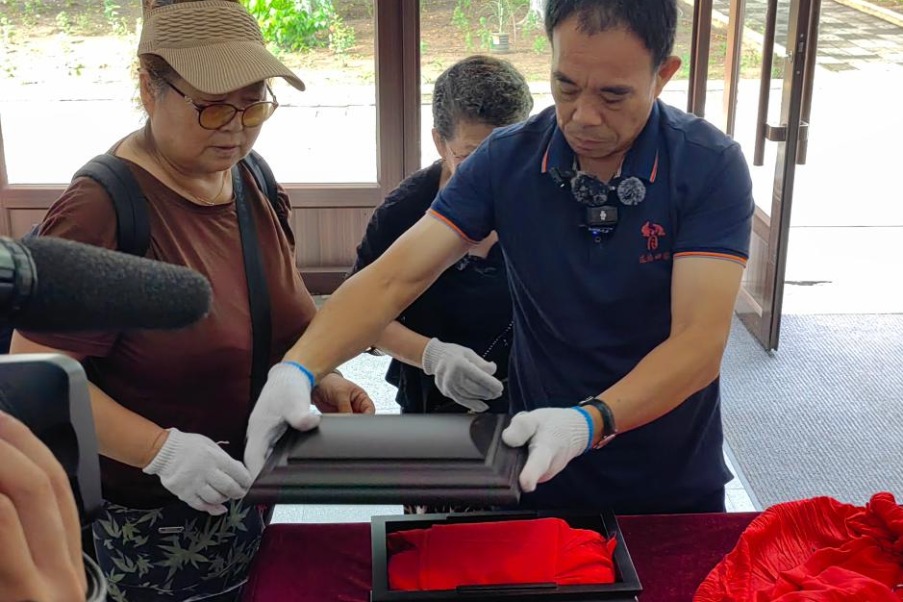Protecting nation's rice bowl
Plan highlights curbing food waste, conserving grain key to food security


China's recent release of an action plan to boost grain conservation and curb food waste underscores the nation's commitment to addressing food security, ecological sustainability and high-quality development in agriculture and food systems, experts said.
The plan, issued by the General Office of the Communist Party of China Central Committee and the General Office of the State Council, China's Cabinet, stipulates the goal of significantly reducing per capita food waste and bringing grain loss rates below the global average of about 14 percent by the end of 2027.
It also sets new targets for reducing food waste and enhancing grain efficiency nationwide, from production and storage to processing and consumption.
Wang Ling'en, an associate researcher from the Institute of Geographic Sciences and Natural Resources Research at the Chinese Academy of Sciences, said the plan reflects China's role as a responsible global player by aligning with the United Nations Sustainable Development Goals, particularly the target of halving global food waste at retail and consumption levels by 2030.
Food conservation is crucial to mitigating pressures on food supply, he stressed.
Despite China's grain output reaching a record 700 million metric tons last year, factors such as limited arable land, rising planting costs and climate-related uncertainties pose risks to food security, Wang said.
"By promoting advanced agricultural machinery, superior seed varieties and appropriate processing techniques, the plan aims to expand the 'invisible farmland' of reduced food waste, enhancing effective food supply and alleviating rigid demand pressures," he said.
Food systems account for more than one-third of global carbon emissions, according to the United Nations Food and Agriculture Organization.
Agricultural restructuring, technological innovation and a change in public behavior toward ecological conservation mentioned in the plan will benefit the goals of carbon peaking and carbon neutrality, Wang said.
An important feature of the plan is its focus on enhancing the quality of food production, processing and consumption, fostering high-quality development in sectors such as dining and food services, he added.
Cheng Guangyan, a researcher from the Institute of Food and Nutrition Development at the Ministry of Agriculture and Rural Affairs, highlighted the plan's full-chain approach to reducing grain loss.
"It provides targeted, actionable measures for each stage such as reducing mechanical harvesting losses, storage losses and processing losses," Cheng said.
Promoting scientific grain storage methods and building high-standard granaries are key to reducing grain loss in storage. Green storage initiatives and smart grain storage technologies will enhance the preservation of stored grain, according to the plan.
Investment in modern transportation infrastructure such as specialized railways and terminals will also reduce grain losses during transit, the plan said, encouraging the adoption of innovative logistics solutions for efficient grain transportation.
It promotes moderate grain processing standards, higher yield rates for grain and oil, and the use of byproducts such as bran and germ to maximize the use of grain.
China also plans to establish a statistical framework for monitoring food loss and waste across sectors, including production, transportation and retail, as well as household consumption.
Regular surveys and evaluations will inform policy adjustments and strengthen enforcement, according to the plan.
"Previously, assessments of food loss have been led by research institutions, with limited data before 2020," Cheng said, adding that the plan emphasizes a national statistical and monitoring system as the foundation for sustainable food waste reduction.
Since the enactment of the anti-food-waste law in 2021, measures such as strengthening equipment management and operation skills have contributed to the reduction of mechanical grain harvesting losses by 1 to 2 percentage points for wheat, rice and corn in 2022.
According to China's food and nutrition reports in recent years, grain crops have an average loss rate of 7 percent, with the potential to reduce waste by 20 million tons if actions are fully implemented. The consumer side sees waste rates of 5 percent in households and 15.2 percent in catering.
Cheng noted the plan focuses on key products and sectors, addressing supply chain losses and dining waste with specific measures for catering services and institutional canteens.
In government, school and State-owned enterprise canteens, the plan emphasizes management and performance assessments to encourage active participation in waste reduction, she added.
Schools are encouraged to adopt practices such as meal weighing and customized menu options, while State-owned organizations and enterprises are urged to arrange food portions in canteens appropriately, the plan said.
For restaurants, it supports the Clean Plate campaign and encourages digital platforms to also act on waste prevention.
Wu Laping, a professor at the College of Economics and Management at China Agricultural University, said it further regulates the behavior of catering service operators, including those on food delivery platforms.
Measures include reminders for ordering appropriate quantities, promoting smaller portion sizes and encouraging leftover food packaging, he explained.
He added that the plan also strengthens enforcement measures by mandating corrective actions for catering businesses that fail to comply with relevant regulations, including publicly exposing cases of food waste as typical examples.
Cheng, the nutrition expert, said the plan underscores the importance of reducing both food quantity losses and nutrient losses such as those caused by excessive grain processing.
"With rising global food security standards, the focus is shifting from meeting basic caloric needs to ensuring structural, qualitative and nutritional security," Cheng said.
It advocates moderate processing techniques to retain dietary fiber and vitamins while promoting technologies like low-temperature milling.
Balanced dietary guidelines for grains, vegetables, fruits, proteins and fats are recommended, while healthy eating habits that prevent "invisible waste" caused by overconsumption are encouraged, she said.
"The action plan calls for not just frugality but smarter, healthier consumption practices," Cheng said.
zhaoyimeng@chinadaily.com.cn
- Carrier's milestone moment: Electromagnetic launches
- Trial of 21-member cross-border crime group ends in Shenzhen
- Shanghai Jiao Tong Uni fosters collaborative research through China-Oceania forum
- Global scientists gather at 2025 Pujiang Innovation Forum in Shanghai
- UNESCO inaugurates STEM education institute in Shanghai
- China, US should avoid conflict, defense chief says






































